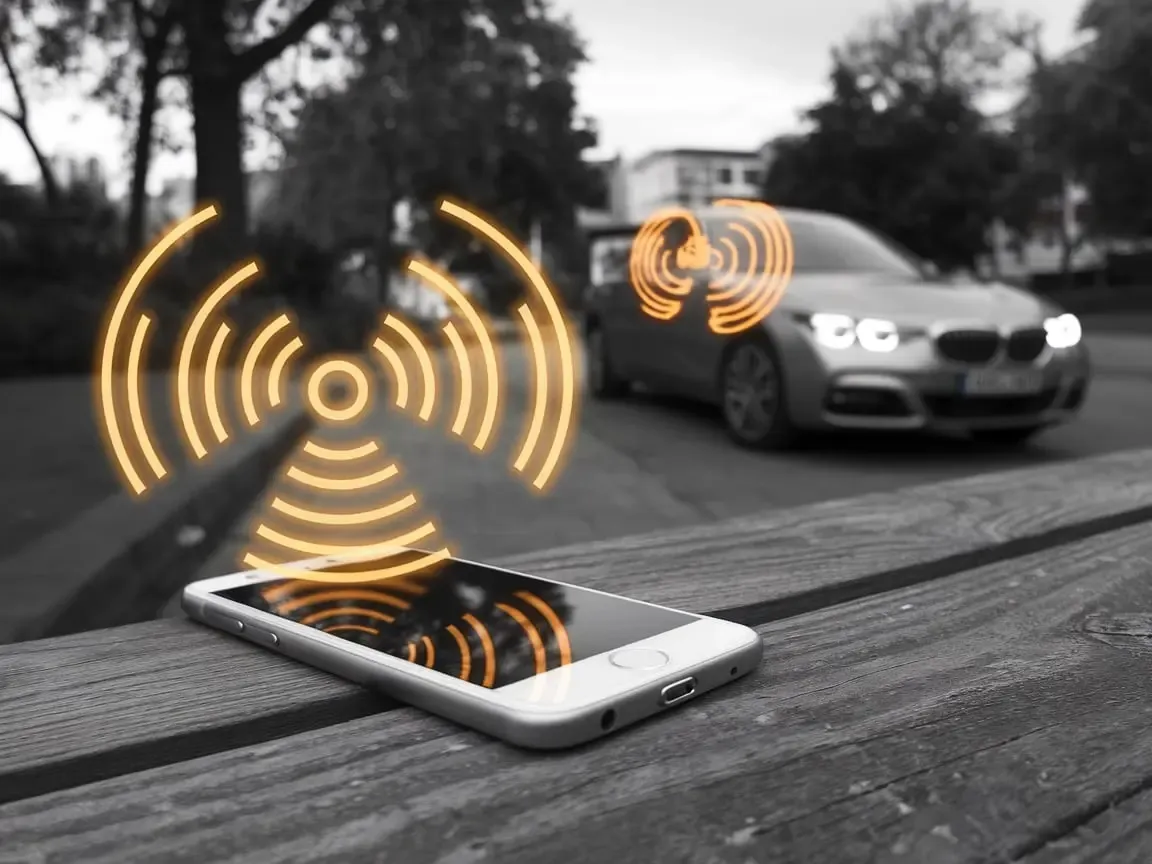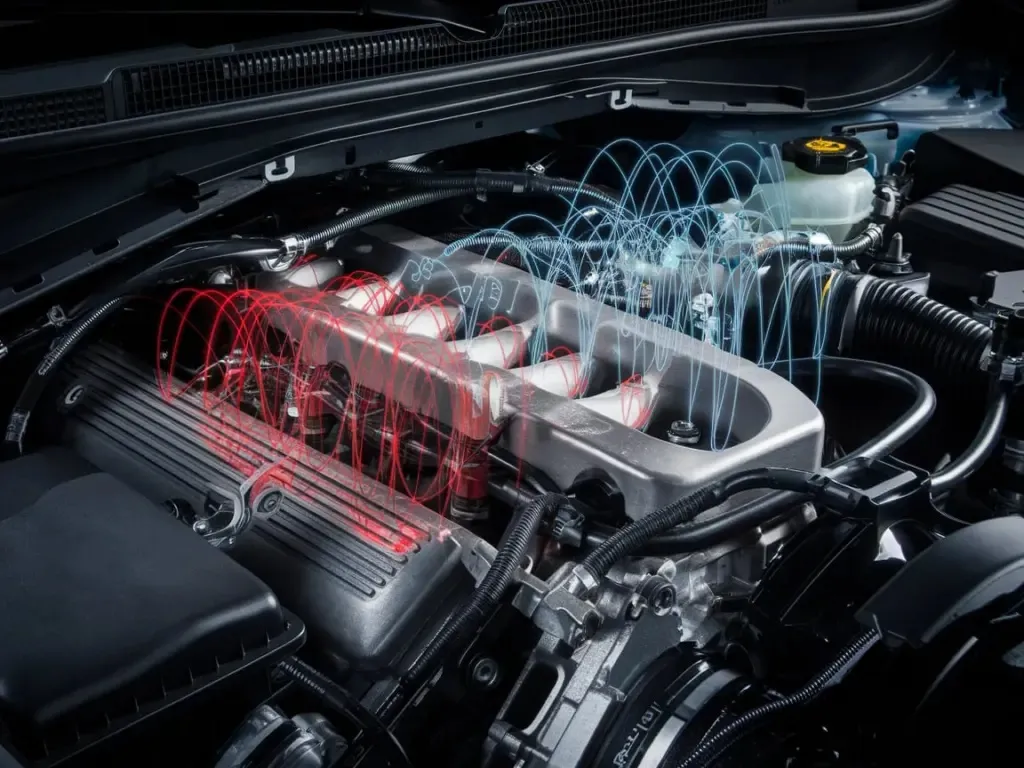Is Car Radiation Like Cellphone Radiation? Could the Dangers Be Exaggerated Here Too?

The term “radiation” often triggers concern, largely due to its association with harmful energy forms like X-rays or nuclear fallout. However, it’s important to clarify that radiation is not a single, uniform phenomenon. Different sources produce radiation with distinct characteristics, especially in terms of frequency and biological effect.
To evaluate potential health risks accurately, we must distinguish between the high-frequency radiation emitted by mobile phones and the low-frequency magnetic fields present in electric and hybrid vehicles. Though both are non-ionizing forms of electromagnetic radiation, their interaction with biological systems differs significantly.
Cell Phones: High-Frequency Exposure and Thermal Impact
 Cellular phones operate in the gigahertz (GHz) frequency range, typically between 0.8 and 2.6 GHz, depending on the network generation. These radiofrequency (RF) waves oscillate billions of times per second and are classified as high-frequency electromagnetic fields.
Cellular phones operate in the gigahertz (GHz) frequency range, typically between 0.8 and 2.6 GHz, depending on the network generation. These radiofrequency (RF) waves oscillate billions of times per second and are classified as high-frequency electromagnetic fields.
At these frequencies, the dominant interaction with biological tissue is thermal. That is, the energy is absorbed by the body and converted into heat. The heating effect is generally localized, such as a slight increase in skin temperature when holding a phone to the ear during prolonged calls. This mechanism is similar in principle to how a microwave oven heats food, although phones operate at significantly lower power levels and under strict regulatory limits for Specific Absorption Rate (SAR).
In short, the biological effect of cell phone radiation is primarily heating. These thermal effects are usually mild and reversible. Once the exposure stops, the body naturally dissipates the heat, and tissue temperatures return to baseline.
Car Radiation: A Low-Frequency Phenomenon with Different Implications
Unlike the high-frequency radiation associated with wireless communication devices, electric and hybrid vehicles generate electromagnetic fields (EMFs) of a fundamentally different nature. The primary source of these emissions is the alternating magnetic fields produced by the electric motors and associated power electronics. These fields operate in the extremely low-frequency (ELF) range, typically tens to hundreds of hertz (Hz). For reference, 1 Hz equals one cycle per second. This places vehicle-generated fields orders of magnitude below the gigahertz-range frequencies used by cellular phones, which operate in the billions of cycles per second.
- Effects on the Nervous System: ELF magnetic fields can induce electrical currents in the human body. In some cases, this may interfere with nerve function, with reported effects such as fatigue or difficulty concentrating.
- Biological and Cellular Effects: Preliminary studies have raised concerns that sustained exposure to low-frequency fields may influence biological processes. Specific areas of interest include cell repair mechanisms and reproductive function.
Comparing the Two: Different Frequencies, Different Risks
 The main difference between the two types of radiation lies in how they affect the human body:
The main difference between the two types of radiation lies in how they affect the human body:
- Thermal Effects (e.g., Cell Phones): These are caused by heat. When a device like a mobile phone emits radiation, the surrounding tissue may absorb energy and warm up slightly. This warming effect is generally temporary and reversible. Once the device is removed or usage stops, the tissue temperature returns to normal.
- Non-Thermal Effects (e.g., Electric and Hybrid Cars): These are not related to heat but rather to biological interactions. Alternating magnetic fields, such as those present in the cabin of electric or hybrid vehicles can interact with the body’s internal systems. For example, a study has observed that exposure to such fields may be linked to disruptions in sleep quality and increased physiological stress markers. These effects, while not fully understood yet, are not necessarily temporary and may persist under continued exposure.
Unlike thermal effects, non-thermal interactions are complex. They are not linked to a single, measurable threshold like temperature rise, and their manifestation can vary depending on exposure duration, individual susceptibility, and field intensity. As a result, non-thermal effects are significantly harder to model, quantify, or predict and therefore raise more concern from a health risk assessment perspective.
Why Isn’t This More Widely Discussed?
Despite the widespread adoption of electric and hybrid vehicles, the subject of magnetic field exposure has not received the same level of attention as other public health issues. This is partly due to:
- The relatively recent introduction of high-current electrical systems in consumer vehicles.
- The historical lag between the emergence of new technologies.
- The comprehensive understanding of their long-term health effects.
It is useful to consider precedent. The health risks associated with substances like tobacco or asbestos were not immediately understood; it took decades of exposure, research, and data collection before regulatory actions were taken. A similar pattern may be unfolding with vehicle-generated electromagnetic fields, where scientific awareness and policy response trail behind technological advancement.
What Are the Implications?
Given the accelerating move toward electrified mobility, the potential health effects of prolonged exposure to low-frequency magnetic fields from these vehicles should be a matter of active consideration. The main question becomes: do we wait for definitive, long-term evidence before acting, or do we acknowledge the early indicators and adopt precautionary measures where feasible?
This is not just a scientific dilemma, it is a public health and regulatory one. It is reasonable, and perhaps necessary, to begin addressing the issue now, rather than later.

